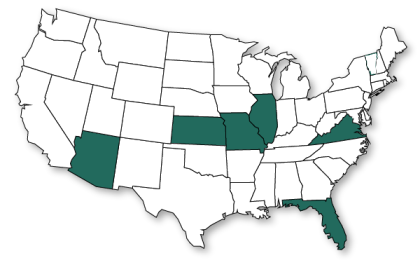In the state of Missouri, your business is not required to carry Workers Compensation coverage if you have fewer than five employees, with the exception of construction trades. Construction firms have to carry Workers Compensation if you have one employee other than yourself. In Illinois, you are required to have coverage if you have three or more employees, with the exception of construction trades where, like Missouri, you have to have the insurance with one or more employees.
That said, even small businesses who are not required to have Workers Compensation should know the risk of not being covered and the benefits of being covered. Here are five facts about Workers Compensation every business owner should know:
1 Accidents Happen – Even if your business is wrapping pillows in bubblewrap, one of your employees can be injured. Having a safe workplace is key to keeping the cost of coverage under control, but injuries can occur in even the safest environment.
2 You Can Get Coverage for Any Number of Employees – Workers Compensation is available for businesses even if you are the only employee. With coverage, you are protected for medical expenses, disability, and lost wages in the event one of your employees – even part time or contract employees – are injured while working.
3 Penalties are Steep – If your employee is injured on the job, and you lack required Workers Compensation, the penalties can be steep, a minimum of $50,000 fine!
4 You Can Be Sued Personally – Many small businesses feel a kinship with their employees, but that does not mean an employee will not sue your company – or even you personally. Depending on how your business is organized, the employer could be liable for a settlement, even if the company goes out of business. As much as you may like your employees, it is smart to have insurance that protects your own family and future.
5 Workers Compensation is Affordable – When you consider the costs and consequences of losing an employee to injury – even just for a few weeks, the cost of a policy makes a great deal of economic sense. Your independent agents at O’Connor Insurance can help you find the kind of coverage you need at a price that will fit your budget.

 The scene must have been terrible. Our client had been out of town for just a few days, enjoying time with family and friends. They returned from the getaway to find their recently remodeled kitchen flooded. Even though they had a dishwasher that was only six months old, the water supply line had ruptured. Most of the cabinets under the sink were ruined, and a cascade of water flowed from the mess in the kitchen down a set of stairs, flooding a large part of their finished basement.
The scene must have been terrible. Our client had been out of town for just a few days, enjoying time with family and friends. They returned from the getaway to find their recently remodeled kitchen flooded. Even though they had a dishwasher that was only six months old, the water supply line had ruptured. Most of the cabinets under the sink were ruined, and a cascade of water flowed from the mess in the kitchen down a set of stairs, flooding a large part of their finished basement. O’Connor Insurance was an early participant in the
O’Connor Insurance was an early participant in the  O’Connor Insurance was an early participant in the
O’Connor Insurance was an early participant in the  A client of O’Connor Insurance shared some insight about car theft. His family had had not one, but two vehicles stolen, taken for a joyride, and left to be discovered by the police.
A client of O’Connor Insurance shared some insight about car theft. His family had had not one, but two vehicles stolen, taken for a joyride, and left to be discovered by the police. O’Connor Insurance was an early participant in the
O’Connor Insurance was an early participant in the 

